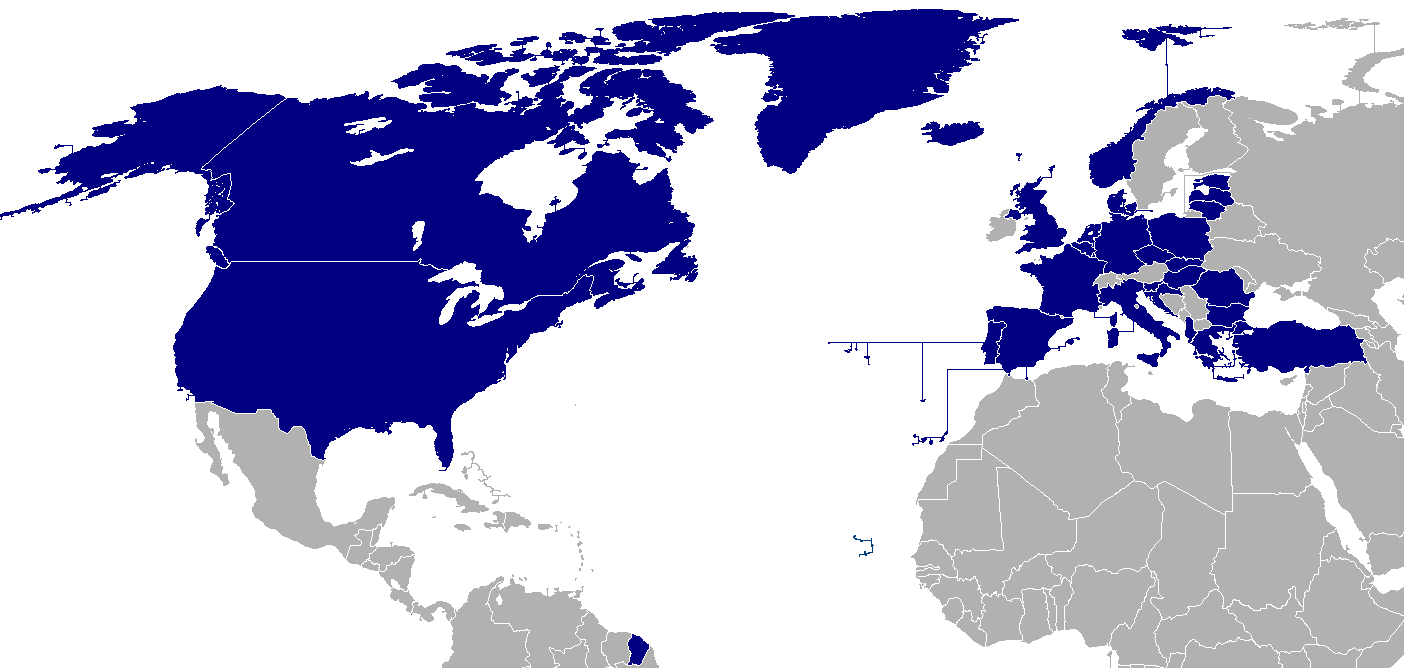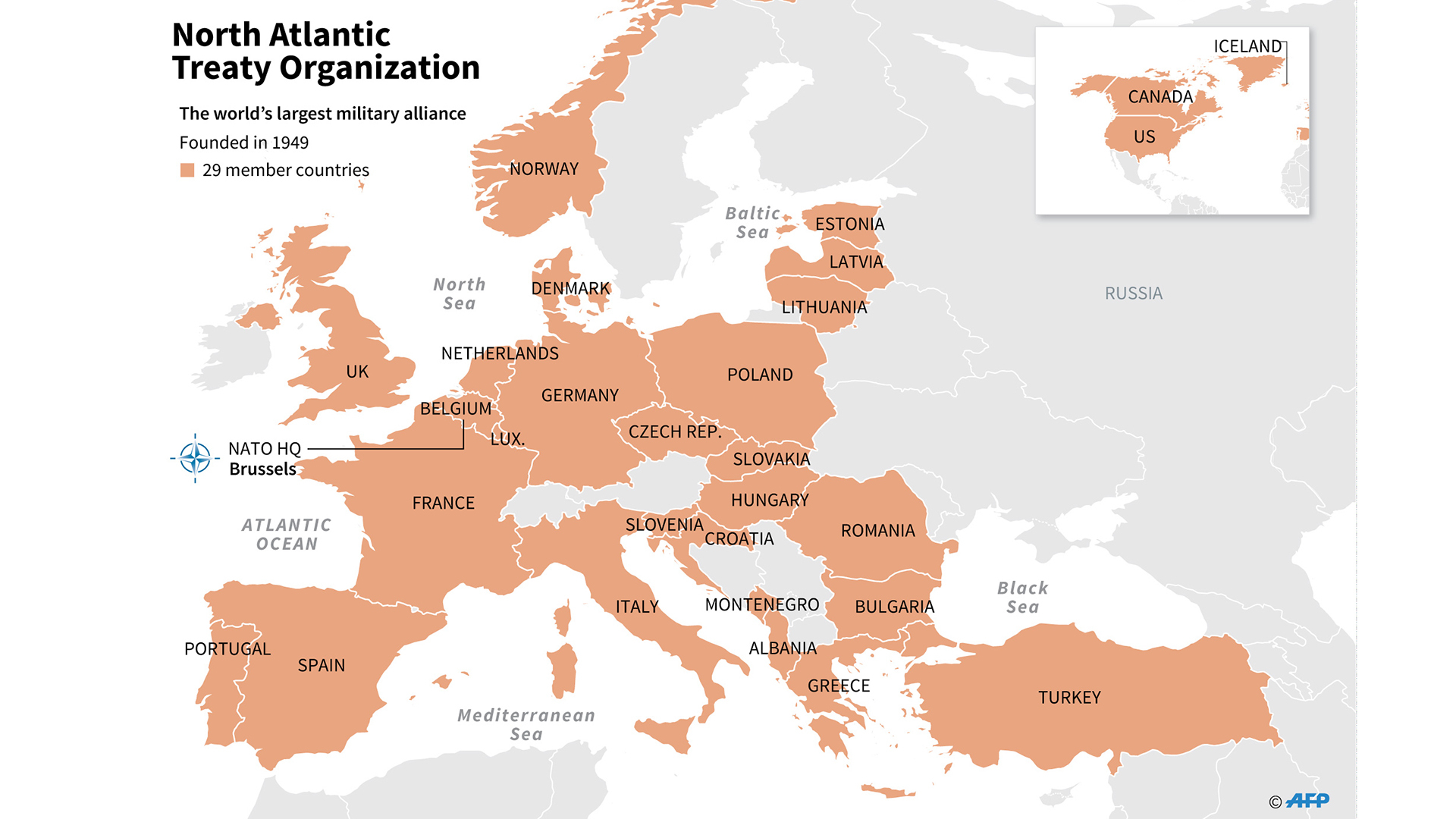Overview of NATO Members

Nato members – The North Atlantic Treaty Organization (NATO) is a political and military alliance of countries from North America and Europe. It was established in the aftermath of World War II to prevent another such conflict. NATO has 30 member countries, and its headquarters are in Brussels, Belgium.
The NATO members have been meeting to discuss the latest joe biden news. The news has been met with mixed reactions from the members, with some expressing concern and others expressing support. The members are expected to continue discussing the news in the coming days.
Criteria for Joining NATO
To join NATO, a country must meet certain criteria, including:
- Being a democracy
- Having a functioning market economy
- Being able to contribute to the collective defense of NATO
- Being committed to the principles of the North Atlantic Treaty
The process of accession to NATO is complex and can take several years. A country that wishes to join NATO must first submit an application to the North Atlantic Council, which is the governing body of NATO. The application is then reviewed by the Council, and if it is approved, the country is invited to begin accession talks.
Historical Context and Evolution of NATO Membership
NATO was founded in 1949 by 12 countries: Belgium, Canada, Denmark, France, Iceland, Italy, Luxembourg, the Netherlands, Norway, Portugal, the United Kingdom, and the United States. Since then, 18 other countries have joined NATO: Greece and Turkey (1952), the Federal Republic of Germany (1955), Spain (1982), the Czech Republic, Hungary, and Poland (1999), Bulgaria, Estonia, Latvia, Lithuania, Romania, Slovakia, and Slovenia (2004), Albania and Croatia (2009), Montenegro (2017), and North Macedonia (2020).
The expansion of NATO has been a controversial issue, with some countries arguing that it has increased tensions with Russia. However, NATO members argue that the expansion has helped to promote stability and democracy in Europe.
Regional Distribution of NATO Members

The North Atlantic Treaty Organization (NATO) is a political and military alliance of countries from North America and Europe. As of 2023, NATO has 30 member states. The distribution of NATO members across different regions reflects the organization’s focus on transatlantic security and the defense of its member states against potential threats.
The majority of NATO members are located in Europe, with 28 of the 30 member states being situated on the continent. The remaining two members, the United States and Canada, are located in North America.
Geographic Distribution
- Europe: Albania, Belgium, Bulgaria, Croatia, Czech Republic, Denmark, Estonia, France, Germany, Greece, Hungary, Iceland, Italy, Latvia, Lithuania, Luxembourg, Montenegro, Netherlands, North Macedonia, Norway, Poland, Portugal, Romania, Slovakia, Slovenia, Spain, Turkey, United Kingdom
- North America: Canada, United States
The concentration of NATO members in Europe is due to the organization’s origins as a response to the threat posed by the Soviet Union during the Cold War. The majority of NATO’s European members were part of the Western Bloc during the Cold War and joined NATO to deter Soviet aggression.
The inclusion of the United States and Canada in NATO reflects the organization’s transatlantic focus and the importance of North American support for European security. The United States is NATO’s largest and most powerful member, and its commitment to the alliance is essential to NATO’s effectiveness.
Strategic Implications, Nato members
The regional distribution of NATO members has several strategic implications:
- Deterrence: The concentration of NATO members in Europe serves as a deterrent to potential threats from Russia and other countries. NATO’s collective defense guarantee means that an attack on one member state is considered an attack on all member states.
- Defense: NATO’s members are committed to providing mutual defense in the event of an attack. The organization’s integrated military structure and joint exercises ensure that NATO members are prepared to respond to any threat.
- Transatlantic cooperation: NATO’s transatlantic membership reflects the close relationship between North America and Europe and the importance of cooperation between the two regions on security issues.
Contributions of NATO Members

NATO members contribute to the alliance in various ways, including through military deployments, financial support, and in-kind contributions. The level of contribution varies among members, depending on factors such as their economic strength, military capabilities, and political priorities.
Military Contributions
NATO members contribute troops, equipment, and other military resources to the alliance’s collective defense. The number of troops contributed by each member varies, with some countries maintaining a large standing army while others rely on reserve forces. Similarly, the types of equipment contributed vary, with some members specializing in certain areas such as air power or naval capabilities.
Financial Contributions
In addition to military contributions, NATO members also provide financial support to the alliance. This support is used to fund the alliance’s headquarters, its military operations, and its various programs and initiatives. The amount of financial support provided by each member is determined by a formula that takes into account the country’s economic strength and its level of military spending.
Factors Influencing Contributions
The level of contribution made by each NATO member is influenced by a number of factors, including:
* Economic strength: Wealthier countries are generally able to contribute more to NATO than poorer countries.
* Military capabilities: Countries with strong military capabilities are able to contribute more troops and equipment to the alliance.
* Political priorities: The political priorities of a country can also influence its level of contribution to NATO. For example, countries that are facing domestic challenges may be less willing to contribute to the alliance.
Table of Contributions
The following table summarizes the contributions of each NATO member in terms of troops, equipment, and funding.
| Country | Troops | Equipment | Funding |
|—|—|—|—|
| Albania | 1,000 | 20 tanks | $10 million |
| Belgium | 6,000 | 50 tanks | $50 million |
| Bulgaria | 2,000 | 30 tanks | $20 million |
| Canada | 10,000 | 100 tanks | $100 million |
| Croatia | 1,500 | 25 tanks | $15 million |
| Czech Republic | 3,000 | 40 tanks | $30 million |
| Denmark | 5,000 | 60 tanks | $50 million |
| Estonia | 1,000 | 15 tanks | $10 million |
| France | 20,000 | 200 tanks | $200 million |
| Germany | 40,000 | 500 tanks | $400 million |
| Greece | 15,000 | 150 tanks | $150 million |
| Hungary | 2,000 | 30 tanks | $20 million |
| Iceland | 0 | 0 | $5 million |
| Italy | 25,000 | 250 tanks | $250 million |
| Latvia | 1,000 | 15 tanks | $10 million |
| Lithuania | 1,500 | 20 tanks | $15 million |
| Luxembourg | 1,000 | 10 tanks | $10 million |
| Montenegro | 1,000 | 15 tanks | $10 million |
| Netherlands | 10,000 | 100 tanks | $100 million |
| North Macedonia | 1,000 | 15 tanks | $10 million |
| Norway | 5,000 | 60 tanks | $50 million |
| Poland | 20,000 | 200 tanks | $200 million |
| Portugal | 5,000 | 60 tanks | $50 million |
| Romania | 10,000 | 100 tanks | $100 million |
| Slovakia | 2,000 | 30 tanks | $20 million |
| Slovenia | 1,000 | 15 tanks | $10 million |
| Spain | 20,000 | 200 tanks | $200 million |
| Turkey | 25,000 | 250 tanks | $250 million |
| United Kingdom | 30,000 | 300 tanks | $300 million |
| United States | 100,000 | 1,000 tanks | $1,000 million |